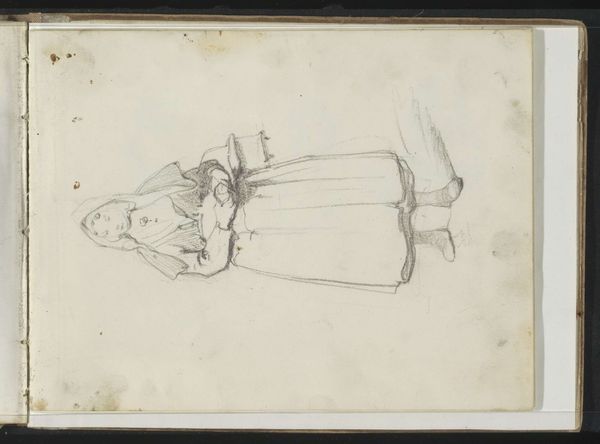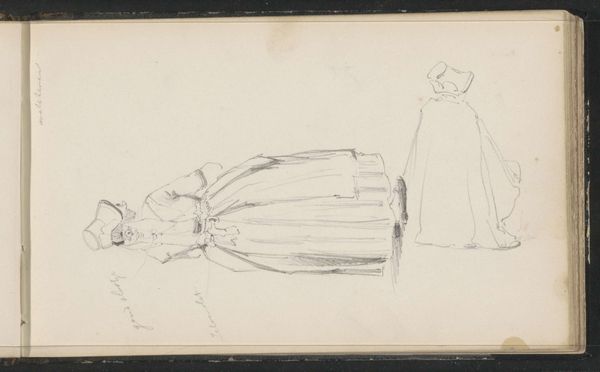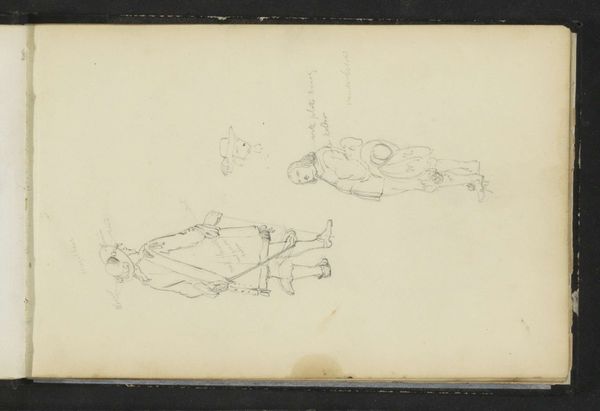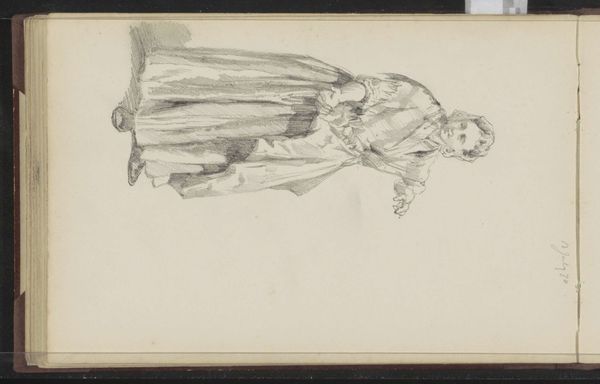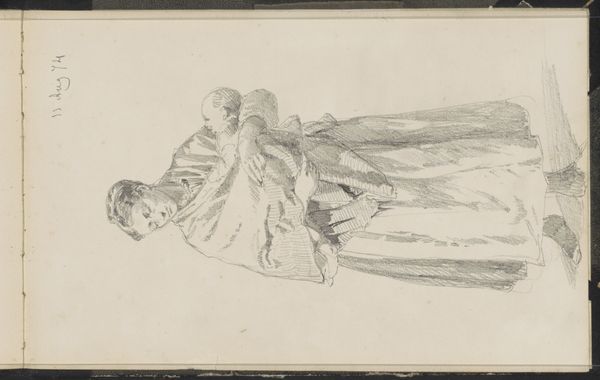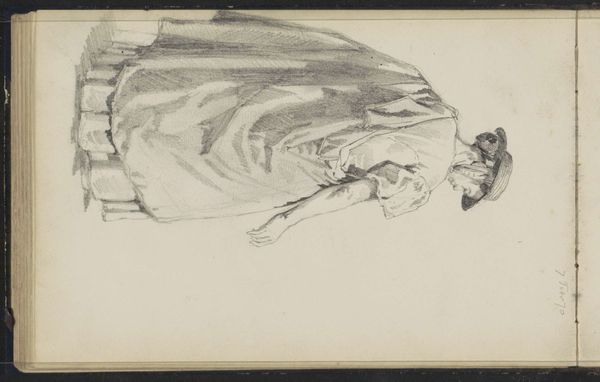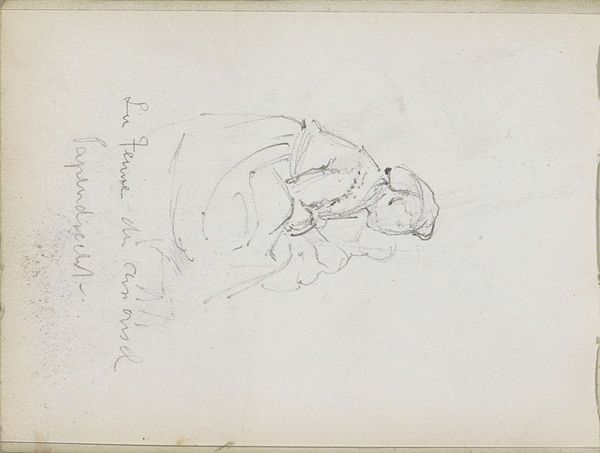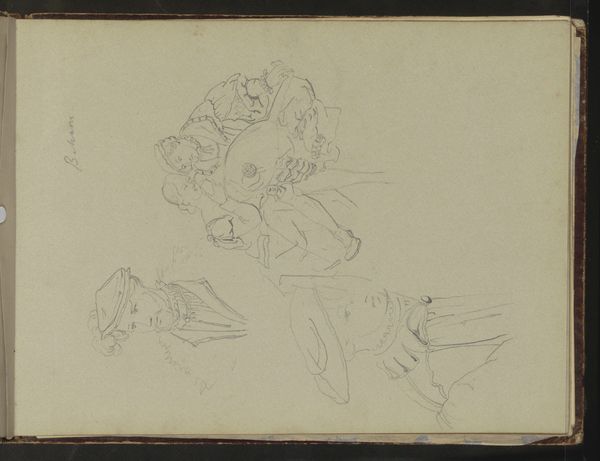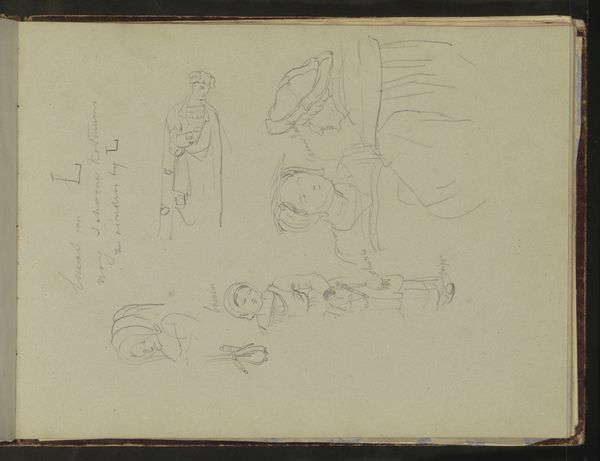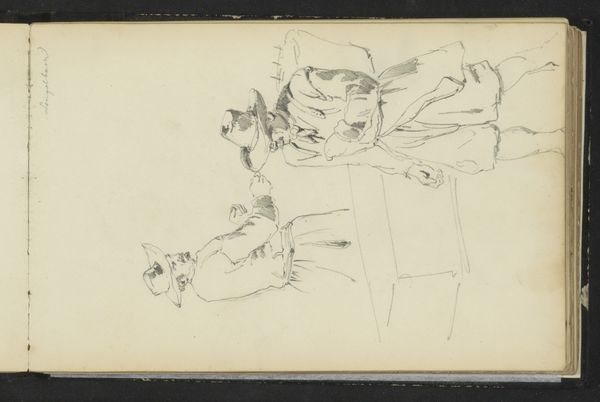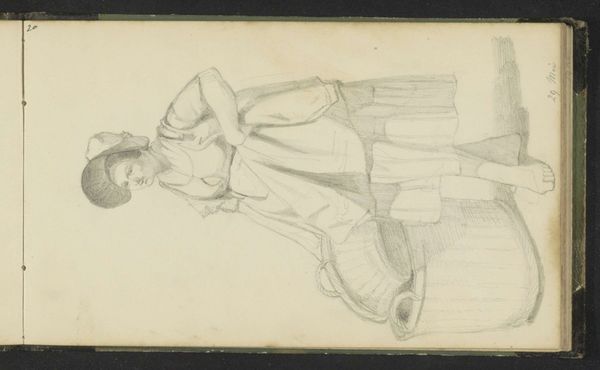
drawing, paper, pencil
#
portrait
#
drawing
#
imaginative character sketch
#
toned paper
#
light pencil work
#
quirky sketch
#
sketch book
#
incomplete sketchy
#
vase
#
figuration
#
paper
#
personal sketchbook
#
character sketch
#
pencil
#
line
#
sketchbook drawing
#
genre-painting
#
sketchbook art
Copyright: Rijks Museum: Open Domain
Curator: This drawing by Cornelis Springer, titled "Vrouw reikt een meisje een kan," which translates to “Woman hands a girl a pitcher,” is an evocative, albeit sketchy, work. The image employs light pencil on paper. What strikes you initially about it? Editor: It's interesting – the looseness of the lines gives it an unfinished quality, almost like a fleeting observation. It's hard to tell much about the relationship between the woman and the girl. What can we infer from the composition, even in this sketch-like form? Curator: Consider the historical context: this drawing likely comes from the mid-19th century, a period of shifting social roles and burgeoning industrialization. Think about how women and girls were often depicted in art. Were they passive subjects, or did they possess agency? Could the act of the woman offering the pitcher – traditionally associated with servitude or domesticity – be interpreted as something more? Editor: More like...? Are you suggesting this simple sketch may symbolize the dynamic between generations? I notice the drawing focuses solely on these two figures and lacks further contextual information about setting. Curator: Exactly! By limiting our view, Springer forces us to confront the immediate exchange between these figures. We need to question power dynamics: does the act reinforce traditional roles, or could it hint at a subtle act of empowerment, with the woman passing on knowledge or sustenance to the next generation? Is it maybe commenting on how gender shaped their reality, considering both women would be constrained by gendered societal expectations and codes of conduct during this period? Editor: That's a really interesting perspective. I was focused on the artistic style and overlooked the potential social commentary. Seeing it as a dialogue on gender roles and societal expectations transforms the image. Curator: Art invites us to ask difficult questions, and by recognizing the sociopolitical landscape, we can unravel its layers of meaning and better connect to its messages. It helps us not just appreciate its aesthetic but see it as an artifact loaded with ideas, too. Editor: It certainly does! This close look really highlighted the importance of historical context and seeing how art reflects and shapes social understanding.
Comments
No comments
Be the first to comment and join the conversation on the ultimate creative platform.

